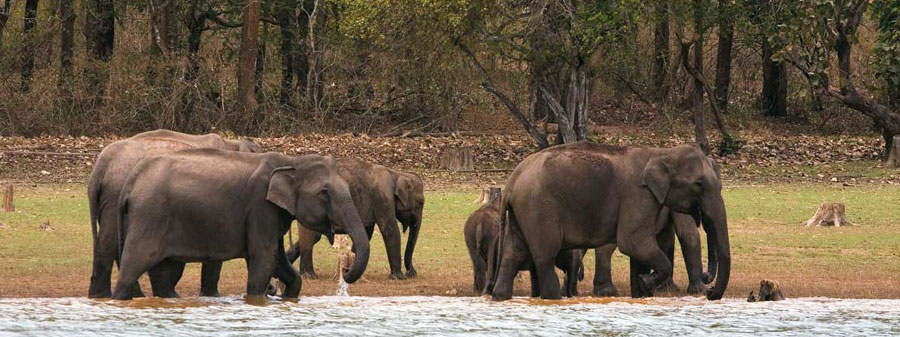Nagarahole National Park: Where Wilderness Thrives in Southern India
By Tushar [28/Oct/23]Nestled in the picturesque Western Ghats of Karnataka, Nagarahole National Park is a hidden gem for nature enthusiasts and wildlife lovers. The park's name, "Nagarahole," translates to "Snake River," and it is a haven for a wide variety of wildlife species. In this blog, we'll embark on a virtual journey through Nagarahole's captivating landscapes, diverse wildlife, and the importance of its conservation efforts.

1. A Lush Landscape:Nagarahole National Park is characterized by its lush, tropical forests, rolling hills, and meandering streams. The park is a part of the Nilgiri Biosphere Reserve, an area known for its rich biodiversity. The forests here are a combination of tropical evergreen and deciduous varieties, providing diverse habitats for wildlife.
2. The Tigers of Nagarahole: One of the prime attractions of Nagarahole is its population of Bengal tigers. These majestic big cats roam freely within the park's dense forests. While tiger sightings require patience and a bit of luck, the thrill of spotting one in its natural habitat is unmatched. Nagarahole is an integral part of India's tiger conservation efforts, and the park's successful initiatives are contributing to the protection of this iconic species.
3. Diverse Wildlife: Apart from tigers, Nagarahole is home to a wide variety of wildlife. Leopards, Indian elephants, gaurs (Indian bison), sambar deer, and spotted deer are commonly seen within the park. The diverse ecosystems of Nagarahole support numerous bird species, making it a birdwatcher's paradise.
4. River Safaris: Nagarahole's river safaris are a unique experience. The Kabini River, which flows through the park, offers a serene backdrop for boat safaris. These excursions provide the opportunity to observe wildlife along the riverbanks, including elephants, crocodiles, and various bird species.
5. Conservation Efforts: Nagarhole National Park is not just a sanctuary; it's a stronghold for conservation. The park has been successful in protecting its wildlife and ecosystems, thanks to strict anti-poaching measures and habitat preservation. Additionally, Nagarahole actively involves local communities in conservation efforts, fostering a sense of ownership and responsibility.
6. Responsible Tourism: Responsible tourism is encouraged in Nagarahole. Visitors should adhere to park rules, maintain a safe distance from wildlife, and respect the environment. Supporting local communities and businesses ensures a positive impact on the region and its conservation initiatives.
7. Visiting Nagarahole: Nagarahole National Park is accessible from major cities in Karnataka. The best time to visit is during the winter months, from October to May, when the weather is pleasant and wildlife sightings are at their peak. Visitors can explore the park through jeep safaris, elephant safaris, and boat safaris. Guided nature walks provide a more intimate experience with the park's flora and fauna.
Conclusion:
Nagarahole National Park is a hidden treasure of southern India, a sanctuary where wilderness thrives. It's a place where the call of the wild reverberates through the dense forests, and the beauty of nature unfolds in all its glory. A visit to Nagarahole is an opportunity to connect with the wild, appreciate the significance of conservation, and be part of a living ecosystem that must be protected. It's a reminder of our responsibility to safeguard the planet's biodiversity and ensure that future generations can experience the magic of Nagarahole's natural world.

